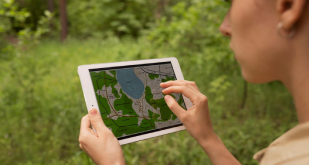Climate Change & Disaster
Resilience: Models, Technologies, & Solutions
To address climate change and mitigate disaster risks, Amrita will
develop sophisticated climate models, explore disaster prediction
and prevention technologies, and design sustainable solutions for
adaptation and mitigation.


This research area is closely aligned with the National Mission for Sustaining the Himalayan Ecosystem, under the National Action Plan on Climate Change (NAPCC), addresses specific ecological challenges in the Himalayan region. It’s part of a broader framework of eight National Missions targeting climate change nationally. India’s disaster management policy emphasizes preparedness and response, with the National Disaster Management Authority (NDMA) and National Disaster Response Force (NDRF) key players in coordinating disaster response and recovery efforts.
Research in climate change and disaster resilience aligns closely with several United Nations Sustainable Development Goals (SDGs). It contributes to raising awareness for environmental sustainability and disaster preparedness (SDG 4.7), promotes inclusive and safe schools resilient to climate-related risks (SDG 4.8), advocates for women’s participation in climate decision-making (SDG 5.5), aims to develop resilient infrastructure (SDG 9.1), and directly addresses reducing disaster impact and integrating climate measures into policies (SDG 11.5 and SDG 13), fostering a sustainable and resilient global society

Address the conservation of forests and mangroves using a combination
of GIS, remote sensing, and participatory approaches, complemented by
mathematical modeling and drones, with a focus on leveraging AI, ML, and big data analytics for enhanced understanding and management.

Achieve net-zero emissions by harnessing biological carbon sequestration,
implementing green technologies, and exploring the potential of hydrogen
fuel cells as sustainable energy solutions.

Assessing the impact of extreme events on biodiversity ecosystems
through multi-modal intercomparison and sensor fusion, using highresolution re-analysis data to model future scenarios.

Enhancing food and nutrition security through the development of climateresilient crops using mathematical modeling of weather patterns, within the
framework of climate-smart agriculture.

Addressing microplastics and marine pollution through the exploration of
recycling methods, biodegradable plastics, bioremediation, and integrated multi-trophic aquaculture (IMTA)

Estimating particulate matter and correlating air pollutants with it, followed by transfer learning-based forecasting of PM levels, while studying oceanic and atmospheric composition retention

Combating global warming through the integration of digital twin technology and AI for solar electric mobility, utilizing the glitter belt concept and flying leaf technology for sustainable energy solutions.

Enhancing resilience against multiple hazards through the development
of robust infrastructure, supported by economic modeling and simulation
education, aimed at fostering smart cities and informed risk management
for sustainable development.
Ecosystem Restoration, Environmental Sustainability
and Management: Measure, Map and Monitor
Leveraging its expertise in environmental sciences, Amrita will
prioritize research in ecosystem restoration practices, develop
advanced tools for environmental monitoring and mapping, and
promote sustainable resource management practices.


Research in ecosystem restoration aligns with key national missions by reducing waste impact, improving sanitation, promoting hygiene (National Rural Health Mission), integrating IoT, AI, Blockchain for smart solutions and sustainability (Digital India), advancing resource-efficient practices, water conservation (Smart Cities Mission), promoting climate-resilient ecosystems, renewable energy (Paris Climate agreement), and emphasizing societal ownership in conservation (Mission Sahbhagita).
Research on ecosystem restoration aligns with key UN SDGs, including SDG 15 (Life on land) through biodiversity conservation and restoration strategies, promoting sustainable land use and combating desertification. It also supports SDG 6 (Clean water and sanitation) by improving water quality through watershed management. Furthermore, it contributes to SDG 13 (Climate action) by mitigating climate change impacts, promoting climate-resilient ecosystems, and enhancing adaptation strategies. Additionally, the research fosters partnerships (SDG 17) for sustainable land management and biodiversity conservation.

Utilizing geo-spatial and simulation modeling, along with multi-source
data fusion, to address soil and water pollution, enhanced by ubiquitous
AI and innovative deliverables.

Promoting regenerative agriculture through a human-centric approach, integrating systems thinking and drone mapping to address unsustainable land use practices in agriculture.

Developing a mathematical model enhanced by autonomous underwater robots to protect aquatic life from acoustic threats.

Implementing IoT and sensor technology alongside nano-technology in green chemistry for wastewater remediation, integrated with vertical farming practices.

Utilizing mathematical modeling and AI-driven data analytics to address inaccuracies in regional predictions, promoting AI for social good.

Engage people in wetland conservation efforts through the integration of GIS and remote sensing technologies, aimed at developing mitigation measures and policies.